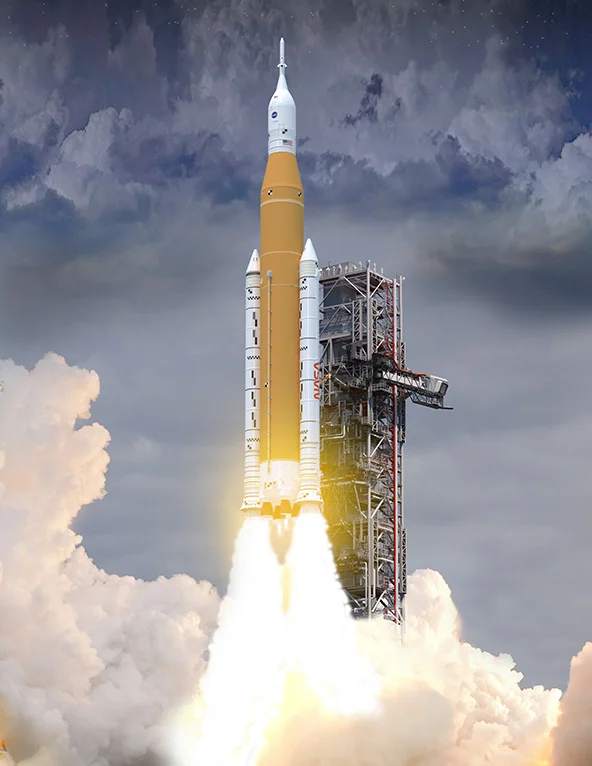Introduction
More than five decades after the historic Apollo 11 Moon landing, humanity is once again setting its sights on our nearest celestial neighbor. NASA’s Artemis mission represents not just a return to the Moon but the beginning of a new era of space exploration. With goals that stretch far beyond the lunar surface, Artemis is designed to pave the way for long-term exploration, sustainable human presence on the Moon, and eventual missions to Mars.
The Artemis program is not just a technological endeavor—it is a symbol of international cooperation, scientific ambition, and a bold step forward in human exploration.
Background: From Apollo to Artemis
Legacy of Apollo
The Apollo missions (1961–1972) were among NASA’s greatest achievements, culminating in six successful Moon landings. These missions provided invaluable insights into lunar geology and demonstrated that human beings could live and work in space for extended periods.
However, after Apollo 17 in 1972, no humans returned to the Moon. Budgetary constraints, shifting political priorities, and changing technological goals redirected space agencies’ focus elsewhere, including the Space Shuttle program and the International Space Station (ISS).
The Birth of Artemis
Named after the twin sister of Apollo in Greek mythology, Artemis symbolizes a return and renewal. Announced formally in 2017 and accelerated in 2019, the Artemis program seeks not only to land humans on the Moon again but to do so in a sustainable way. Unlike Apollo, which focused on short-term visits, Artemis aims to establish a long-term lunar presence and serve as a stepping stone to Mars.
Objectives of the Artemis Mission
1. Landing the First Woman and Person of Color on the Moon
Diversity and representation are core elements of Artemis. NASA has committed to landing the first woman and the first person of color on the Moon, showcasing a more inclusive era of space exploration and inspiring a new generation of explorers.
2. Sustainable Lunar Exploration
Artemis is not just about flags and footprints. The goal is to establish a sustainable presence on and around the Moon by the end of the decade. This includes:
- Developing reusable spacecraft and landers
- Building lunar infrastructure like habitats and power systems
- Establishing the Lunar Gateway, a space station in lunar orbit
3. Preparing for Mars and Beyond
The Moon serves as a testing ground for technologies and systems needed for Mars missions. Artemis will allow NASA and its partners to test life support systems, deep space communication, and crew health in long-duration missions—all critical for future Mars exploration.
Key Components of the Artemis Program
1. Space Launch System
The Space Launch System is NASA’s most powerful rocket to date. Designed to carry astronauts and cargo beyond Earth’s orbit, SLS is the backbone of Artemis launches. It is capable of sending the Orion spacecraft, astronauts, and large payloads directly to the Moon.
2. Orion Spacecraft
Orion is the crew capsule that will transport astronauts from Earth to lunar orbit and back. Equipped with state-of-the-art safety systems, life support, and communication systems, Orion has already undergone successful uncrewed test flights.
3. Artemis Base Camp
As part of the long-term vision, NASA plans to build a base camp on the Moon’s south pole. This region is believed to contain water ice—an essential resource for life support and fuel. The base camp will serve as a hub for surface exploration and scientific research.
4. Lunar Gateway
The Gateway is a small, crew-tended space station in orbit around the Moon. It will provide vital support for sustainable lunar missions and act as a staging point for missions to the Moon’s surface and eventually Mars. Unlike the ISS, the Gateway is designed for deep space operations and will not be permanently occupied.
5. Human Landing System
NASA has partnered with private companies like SpaceX and Blue Origin to develop human landing systems. SpaceX’s Starship has been selected as one of the primary landers for Artemis III, the mission intended to return humans to the Moon.
The Artemis Mission Timeline
Artemis I – Uncrewed Test Flight
Launched in November 2022, Artemis I was an uncrewed mission that tested the SLS and Orion spacecraft. The mission orbited the Moon and returned safely to Earth, proving that NASA’s new launch system is ready for crewed missions.
Artemis II – Crewed Lunar Flyby
Scheduled for 2025, Artemis II will be the first crewed mission of the program. Four astronauts will fly around the Moon aboard Orion but will not land. This mission will test systems needed for long-duration human spaceflight.
Artemis III – Crewed Lunar Landing
Currently targeted for 2026–2027, Artemis III will land astronauts on the Moon’s south pole using the SpaceX Starship Human Landing System. This mission will mark the return of humans to the lunar surface for the first time in over 50 years.
Artemis IV and Beyond
Future missions aim to expand the lunar presence by assembling the Gateway, constructing the Artemis Base Camp, and conducting scientific research. These missions will lay the groundwork for sending humans to Mars in the 2030s.
International Collaboration and Commercial Partnerships
Artemis Accords
NASA has invited countries around the world to participate in the Artemis program through the Artemis Accords. These accords establish principles for peaceful, transparent, and cooperative exploration of the Moon and beyond.
As of 2025, over 30 countries have signed the Artemis Accords, including key allies like Japan, the United Kingdom, Canada, Italy, Australia, and the United Arab Emirates. This framework fosters responsible space exploration and international goodwill.
Commercial Involvement
NASA is relying heavily on partnerships with commercial entities to reduce costs and increase innovation. Companies like SpaceX, Blue Origin, Boeing, Lockheed Martin, and Northrop Grumman are key players in various components of the mission.
These collaborations are transforming the space industry, opening the door for future commercial lunar operations such as mining, tourism, and research.
Scientific and Technological Benefits
Moon as a Laboratory
The Moon is an ideal platform for scientific discovery. Artemis missions will allow researchers to:
- Study ancient lunar geology
- Investigate water ice deposits
- Understand cosmic radiation
- Test in-situ resource utilization (ISRU)
The insights gained could inform not only planetary science but also Earth sciences and climate research.
Advancing Technology
Artemis is pushing the boundaries of engineering and innovation. Developments in propulsion, robotics, AI-driven navigation, life support systems, and space habitat design will benefit multiple industries on Earth, from healthcare to clean energy.
Challenges and Risks
Technical Challenges
Deep space exploration is fraught with difficulty. Key challenges include:
- Ensuring crew safety from radiation
- Managing the logistics of lunar landings
- Building reliable communication infrastructure
- Maintaining life support in extreme lunar environments
Budget and Political Hurdles
Sustained funding is essential for Artemis’s success. Changes in political leadership and economic pressures can threaten long-term commitments. NASA has to balance ambition with financial and logistical realism.
International Competition
The Artemis program is not unfolding in a vacuum. China, through its Chang’e missions and the upcoming International Lunar Research Station (ILRS) project with Russia, is also aiming to establish a lunar presence. This could spark a new kind of space race—one marked by competition, but also potential cooperation.
The Bigger Picture: Why Artemis Matters
Artemis is not just a mission—it’s a movement. By returning to the Moon and planning for Mars, humanity is reaffirming its desire to explore, to learn, and to go beyond. The Moon is more than a destination; it’s a proving ground for the future of civilization in space.
Moreover, the Artemis program represents a bold rethinking of how we explore. It’s inclusive, international, and built on partnerships between public and private sectors. It carries the promise of shared progress and discovery.
Conclusion
The Artemis mission is the most ambitious space exploration effort in decades. With its eyes set on the Moon, Mars, and beyond, it is forging a path toward a new era of human spaceflight. As Artemis progresses, it promises not only to transform our understanding of the cosmos but also to inspire generations to look up, dream big, and explore further than ever before.







